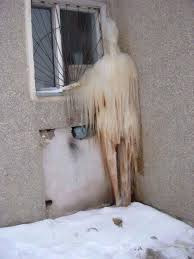Don’t be Spooked by the Ghost in Your Head

Is that a ghost or is your brain overworking and trying to make meaning?
Imagine that you’ve just moved into your new house. It’s 80 years old. That night you hear a faint whistle coming from your bedroom window. But it’s closed tight. Your door creaks, and then suddenly slams shut.
For most people the answer to these unusual and unexplained events is: ghost!
In fact, 50 percent of people polled in an 8th grade BMS classroom believe in ghosts. And 22 percent of them are afraid of ghosts.
But there’s nothing to be afraid of. I believe that people shouldn’t be afraid of ghosts, because there’s scientific evidence that explains why people may think they feel the presence of ghosts.
My idea is backed up by experts. Alice Gregory, a Professor of Psychology at Goldsmiths University believes that there’s a scientific reason as to why people feel the presence of ghosts.
Dreaming with your eyes open is an unusual phenomenon that only occurs to a certain population. When we fall into a deep sleep and enter a state where we dream, our body kickstarts sleep paralysis. According to Gregory this is when “the brain stem typically starts to inhibit our ability to move, see and hear things”. This makes sure that we don’t get hurt due to the actions and movements we make in our dreams.
But 8 percent of people retain some form of consciousness during sleep paralysis. This can lead them to see things that aren’t really there. Almost like seeing or feeling your dreams in real life.
In other words? Hallucinations.
That’s just one explanation to why some people may have experienced the presence of ghosts.
Another reason why some people may see ghosts or spectral figures actually has to do with your brain making a mistake.
Have you ever been in the dark and looked too hard at a shadowy shape, and then suddenly you see a face?
That’s your brain overworking. Sometimes your brain tries too hard to make meaning out of everything, even if there is no meaning. Making meaning out of the meaningless.
Do you see a creepy figure in this image on this page? Most people see it even though it’s just ice.
The scientific term for this is pareidolia. Pareidolia is a psychological phenomenon that causes people to see patterns in random objects. This also causes people to assign human features to random objects.
It’s understandable to think that unusual or unexplained experiences or noises can only come from the paranormal, but that’s not true. Those experiences just don’t have an immediate answer. Because your brain doesn’t have an answer, it makes up its own or fills in the gaps with what it does know, and that may not always be true.
You can also play tricks on yourself. Heard of willpower? In that case you are tricking your brain into thinking that you’re able to do something. In the case of ghosts, some people may believe that a loved one who has passed away is trying to interact with them, even if that loved one died a long time ago. Those people sometimes mistake slight changes in air currents as a ghostly figure reaching out towards them, tricking their brain into believing in ghosts. “Ghosts are the mind’s way of interpreting how the body reacts to certain surroundings,” say U.K. psychologists.
So the next time you hear or see something unusual and think, “Ghost!”, just remember that your brain might just be playing tricks on you and science most likely has an answer for that unusual experience.
And it’s not ghosts.


